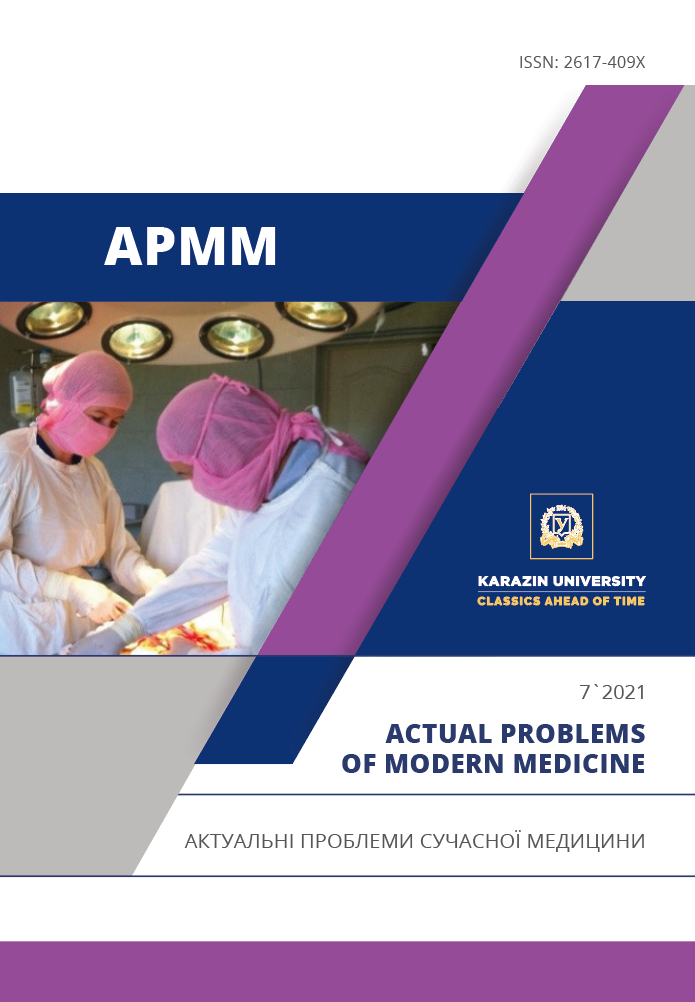Special aspects of the course and diagnosis of neurosyphilis on the example of a clinical case
Abstract
Neurosyphilis is an infectious disease caused by Treponema pallidum and characterized by damage of the central nervous system. This disease may be asymptomatic or have an atypical clinical course, which leads to late diagnosis. The most informative diagnostic methods for this disease are specific serological reactions to syphilis, MRI of the brain and cerebrospinal fluid analysis. Aim. To show the features of the course, treatment and diagnosis of neurosyphilis using the example of a clinical case. Materials and methods. Patient S., born in 1963, complained about significant memory impairment, difficulties with orientation in time and space, mood swings, verbosity and exaggeration, and was hospitalized at the State Institution “Institute of Neurology, Psychiatry and Narcology of the National Academy of Medical Sciences of Ukraine”. Neurological status: eye slits and pupils were uniform. The movements of the eyeballs were painless. Insufficiency of the act of convergence was found. Corneal reactions were reduced. The patient felt pain after the palpation of supra- and infraorbital points. There was an asymmetry in the facial innervation. The tongue was on the midline, swollen, with tooth imprints. There were no pathological signs, sensitive violations. Shaking movements were noticed during the Romberg test. During the examination of the cognitive function using the Mini-Mental State Examination (MMSE) scale, the patient scored 21 points, which corresponds to mild dementia. Results. 1. According to the results of MRI examination of the brain, there was an MR-picture of areas of cystic-gliosis transformation of the poles of the temporal lobes and structural changes of the hippocampal gyrus (most likely, caused by the chronic inflammatory process); vascular foci of the brain as manifestations of dyscirculatory changes, moderate external hydrocephalus. 2. A serological examination for the presence of the antigen of the Treponema pallidum pathogen was performed, the result was positive. 3. Cerebrospinal fluid analysis revealed the following results. Cytosis was 1x106/l, protein was 0.21 g/l, glucose 3.4 mmol/l, Pandy test positivity. Based on the obtained data, the patient was diagnosed with neurosyphilis. The patient underwent etiopathogenetic treatment with benzylpenicillin sodium. After treatment the patient's condition gradually improved. Conclusions. Specific serological reactions to syphilis, MRI of the brain and cerebrospinal fluid analysis are mandatory tests for the diagnosis of neurosyphilis. Early detection of Treponema pallidum and rational therapy can prevent the development of severe consequences and improve the patient's condition. Syphilis is a multidisciplinary problem today and needs the attention of general practitioners, dermatologists and neurologists.
Downloads
References
Gonzalez H, Koralnik IJ, Marra CM. Neurosyphilis. Seminars in neurology. – Thieme Medical Publishers. 2019; 39(04):448-455. Available from: https://doi.org/10.1055/s-0039-1688942
State expert center of the Ministry of Health of Ukraine. Syphilis Adapted evidence-based clinical guideline. 2017. [In Ukrainian] Available from: https://www.dec.gov.ua/wp-content/uploads/2019/11/akn_syph.pdf
Mavrov GI, Mironyuk VI. Syphilis among the psychoactive substances users: clinical, epidemiological, and serological features. Dermatovenereology. Cosmetology. Sexopathology. 2017;1(4):148-152. [In Ukrainian] Available from: https://repo.dma.dp.ua/3315/1/25_26_Мавров.pdf
Mironenko, TV, et al. Neurosyphilis. Analytical review and own observation. International Neurological Journal. 2014;4 (66):163-169. [In Russian] Available from: https://cyberleninka.ru/article/n/neyrosifilis-analiticheskoe-obozrenie-i-sobstvennoe-nablyudenie/viewer
Ropper AH. Neurosyphilis. New England Journal of Medicine. 2019;381(14):1358-1363. Available from: https://doi.org/10.1056/NEJMra1906228
Tuddenham S, Ghanem KG. Neurosyphilis: knowledge gaps and controversies. Sexually transmitted diseases. 2018;45(3):147-151. Available from: https://doi.org/10.1097/OLQ.0000000000000723.
Skalnaya A. et al. Neurosyphilis in the modern era: Literature review and case series. Journal of Clinical Neuroscience. 2019;69:67-73. Available from: https://doi.org/10.1016/j.jocn.2019.08.033.
Marra CM. Neurosyphilis. Continuum: Lifelong Learning in Neurology. 2015;21(6):1714-1728. Available from: https://doi.org/10.1212/CON.0000000000000250
Berger JR., Dean D. Neurosyphilis. Handbook of clinical neurology. 2014;121:1461-1472. Available from: https://doi.org/10.1016/B978-0-7020-4088-7.00098-5
Kyryliuk SYa, Negrych TI., Sanotsky Ya. A clinical case of meningovascular syphilis in combination with HIV infection. Zaporozhye Medical Journal. 2019;21(3):411-416. [In Ukrainian] Available from: http://zmj.zsmu.edu.ua/article/view/169221/169317




